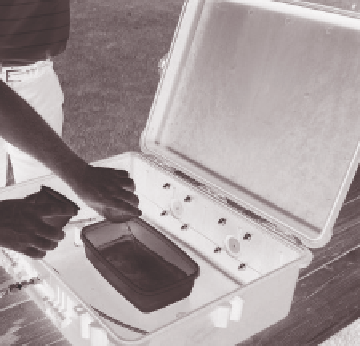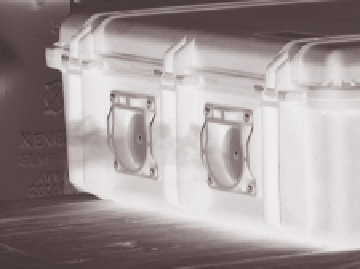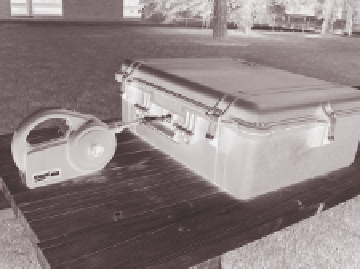Agriculture Reference
In-Depth Information
(b)
(a)
(c)
Figure 14.4.
Easy three-step procedure for operating the PCS: a) mix appropriate
quantities of reagents, b) generate ClO
2
for 30-60 min, c) air fl ush and fi lter remaining
ClO
2
. The process kills pathogenic bacteria on FFVs or sterilizes resistant bacterial spores
contaminating medical instruments.
containing spores (10
5
spores/mL) of either
B. stearothermophilus
or
B. atrophaeus
,
that are intended to indicate sterilization by steam autoclaves (wet heat) or ethylene
oxide gas, respectively. The PCS also sterilized live cultures of resistant bacterial
spores of
B. stearothermophilus
confi gured as suspensions or dried-on, hard, nonpo-
rous surfaces made of glass or metal (and recovered using commercial HY-Check
swab kits). In all cases, conditions were achieved in the PCS such that exposure to
the chlorine dioxide eliminated the resistant bacterial spores. Aqueous suspensions of
B. stearothermophilus
spores exposed to the chlorine dioxide treatments were not
recoverable but retained their phase bright character after treatment, indicating that a
different mechanism was responsible for effecting spore inactivation by chlorine
dioxide than by wet heat or high pressure (Young and Setlow 2003).
The PCS for Fresh Fruits and Vegetables
As indicated above, FFVs are popular food items desired by the soldier, and soldiers
in global deployments face potential emerging and more virulent agriterrorist threats








